A Brief History of Wei Jin Dynasty Clothing
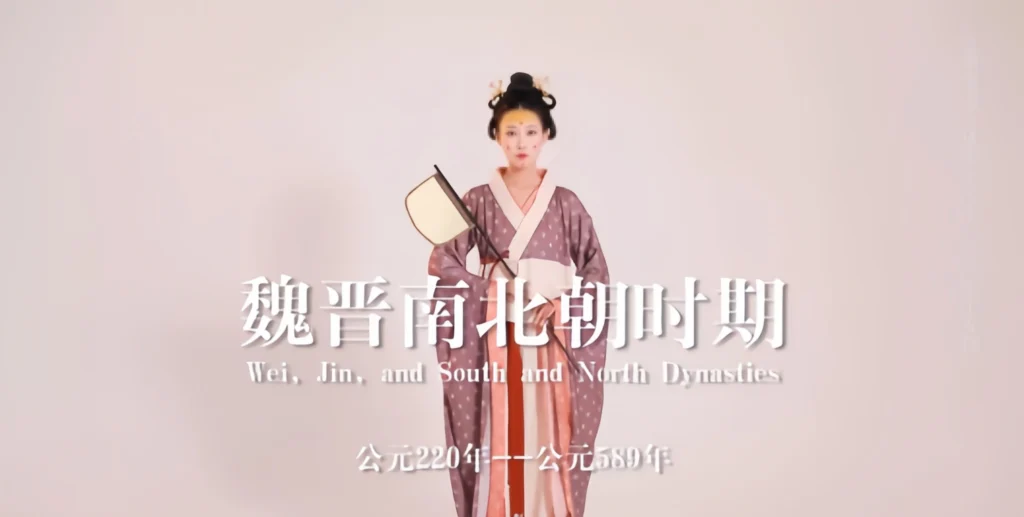
The Wei and Jin Dynasties (220–589 CE) were a chaotic yet transformative period in Chinese history, shaping a unique chapter in Wei Jin Dynasty clothing. This era’s hanfu—or traditional Chinese clothing—blended diverse ethnic influences into styles that remain iconic in ancient Chinese fashion. In this blog, we uncover five captivating secrets about the garments, accessories, and cultural significance of this remarkable period.
The Wei-Jin Dynasty’s flowing Hanfu styles are a unique part of Hanfu’s evolution, blending artistry and freedom. Curious about their historical roots? Explore more!

Impact of the Era on Hanfu
During the Wei, Jin, and Southern and Northern Dynasties, prolonged warfare and political fragmentation did not halt hanfu’s evolution. Instead, they spurred innovation through the blending of diverse ethnic cultures.
In the north, minority regimes fused their clothing elements with Han Chinese traditions, introducing tight-fitting, narrow-sleeved garments and short jackets with long trousers, adding a sharp, spirited flair to hanfu. In the relatively stable south, the elegant and flowing styles of the Han and Wei periods were preserved and refined, creating distinct yet interconnected northern and southern clothing aesthetics.

Wei and Jin Hanfu Styles
Men’s Wei Jin Dynasty Clothing
Shan (Jacket)
The shan (jacket) was the dominant men’s garment during this period, available in single-layered or padded versions. Unlike the robes of the Qin and Han dynasties, the shan featured wide, open cuffs without tightened edges, offering a relaxed and comfortable fit that exuded a carefree charm.

It came in two styles: open-front (duijin) and cross-collared (jiaoling). The open-front shan often revealed the chest, while the cross-collared version was more reserved. Literati, like the “Seven Sages of the Bamboo Grove,” favored wide-sleeved, open-chested shan, embodying the Wei-Jin spirit of freedom and individuality. This style symbolized a break from rigid Confucian norms and a focus on personal expression.

Kuzhe (Trousers and Jacket)
Originating from northern minority cultures, the kuzhe became widely popular in both military and civilian settings. It consisted of a short jacket (zhe) and wide trousers (ku). The jacket, typically open-front, had adjustable cuffs and reached the hips, while the trousers were loose and often tied at the knees with brocade ribbons for ease of movement.
Practical and convenient, the kuzhe suited horseback riding, combat, and labor. Its rapid adoption across social classes reflected ethnic integration in clothing and broke the monotony of traditional styles.
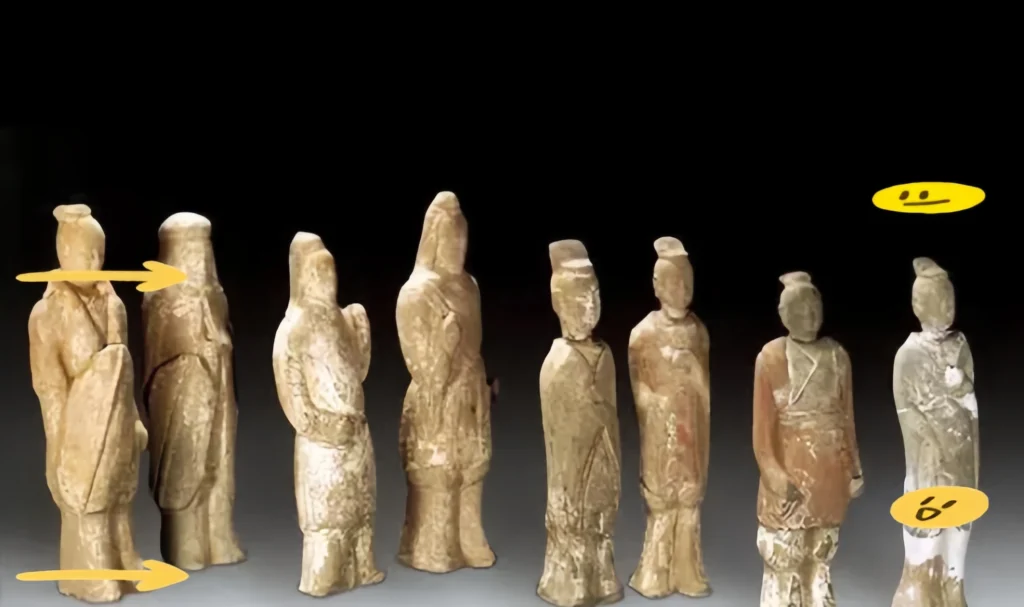
Liangdang (Sleeveless Vest)
Influenced by minority attire, the liangdang resembled a modern vest. Sleeveless and collarless, it consisted of front and back panels connected by shoulder straps and secured with a leather belt. Initially worn as an undergarment, it later became outerwear for both men and women.
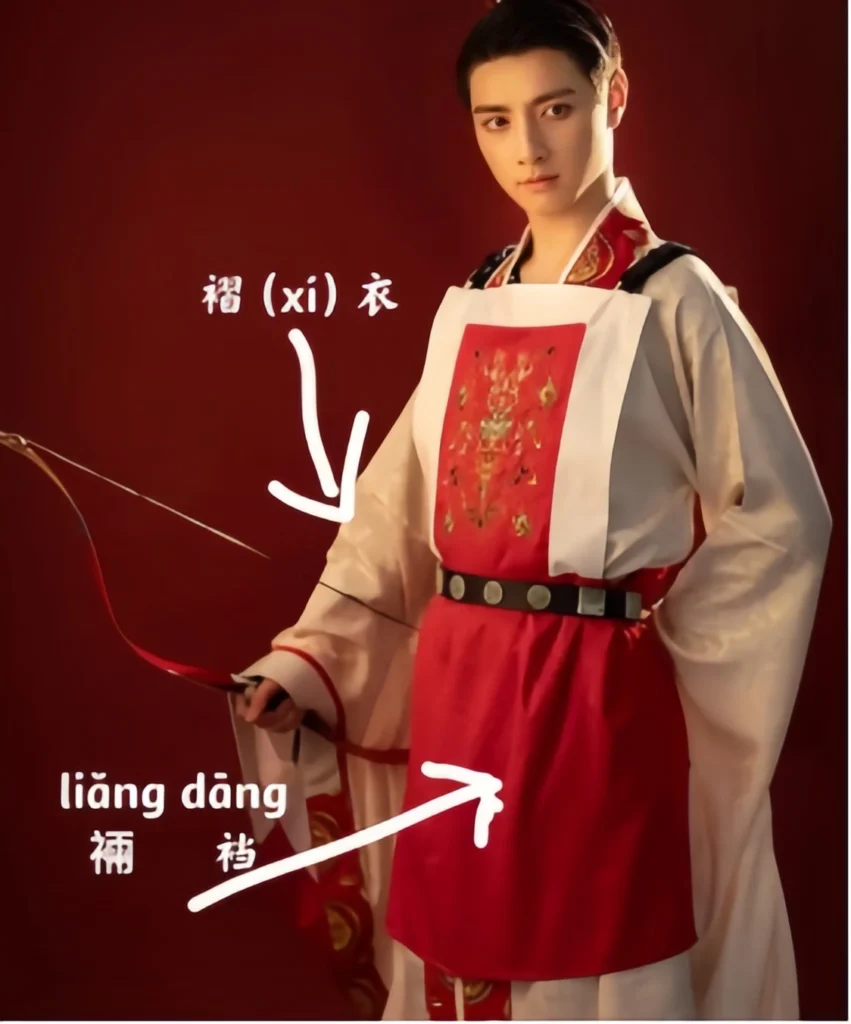
In the military, liangdang paired with armor for added protection. Among civilians, it served as a practical, warm layer, highlighting the diversity and functionality of clothing during this period.

Women’s Wei Jin Dynasty Clothing
Ruqun (Jacket and Skirt)
The ruqun remained a staple for women, featuring a short jacket (ru) reaching the waist and a long skirt (qun). The jacket came in cross-collared or open-front styles, with cross-collared being more common. Sleeves varied from narrow (sleek and practical) to wide (soft and elegant). The skirt, tied high at the waist with silk or cloth sashes, was wide with fine pleats.
Bold and vibrant color combinations—red, green, purple—defined the ruqun, often adorned with intricate embroidery of flowers or animals, reflecting women’s grace and pursuit of beauty.
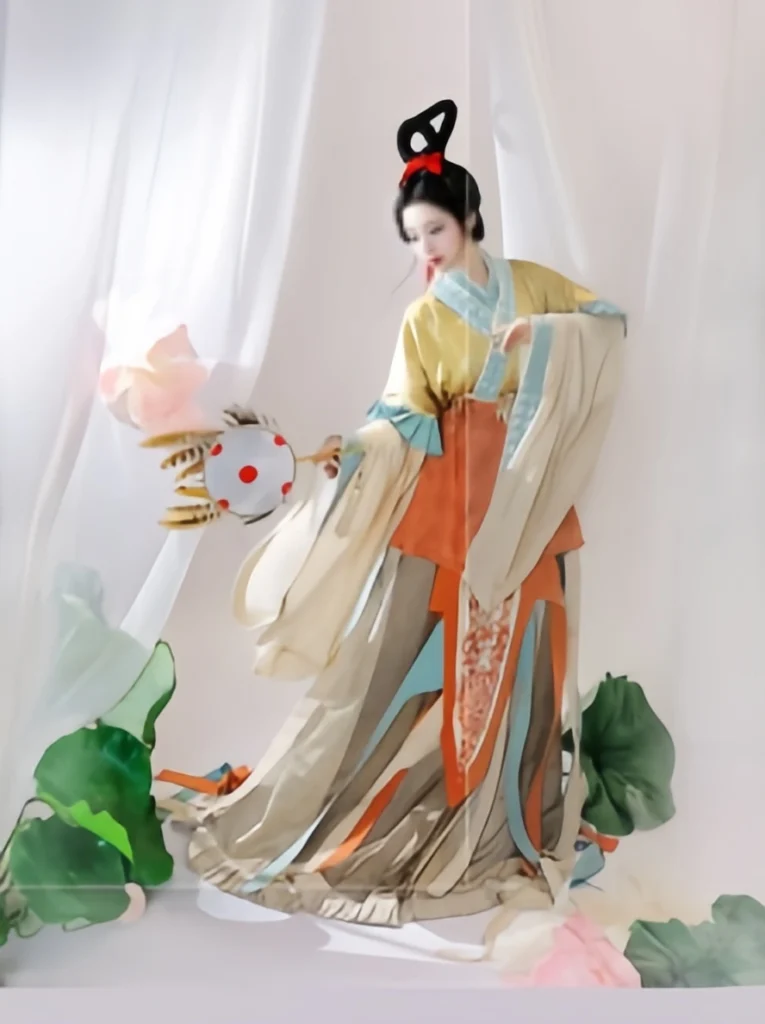
Zaju Chuiyao (Layered Skirt with Streamers)
Unique to the Wei and Jin periods, the zaju chuiyao evolved from the deep robe (shenyi). Its hem was cut into multiple triangular layers, wide at the top and pointed at the bottom, resembling a swallow’s tail (yao). Streamers adorned the shoulders and back, flowing gracefully with movement, creating a dynamic and ethereal aesthetic.
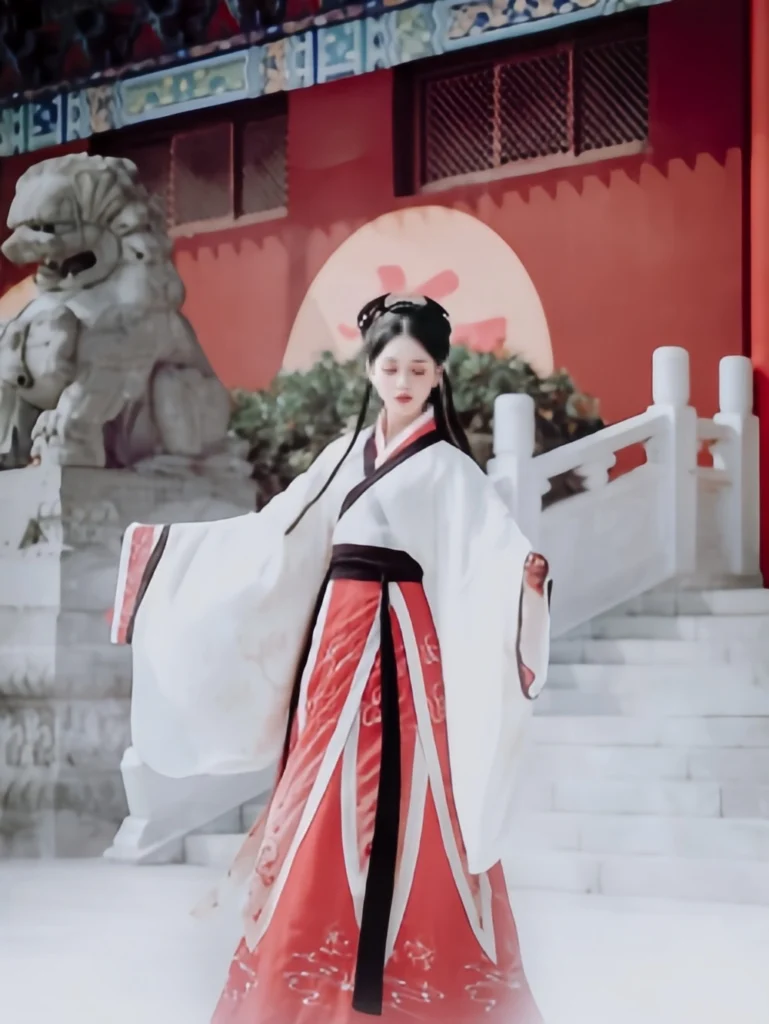
Popular among aristocratic women, this style embodied the era’s love for lightness, freedom, and romanticism, showcasing the refined tastes of the time.
Mili and Weimao (Veiled Headwear)
The mili (large square scarf) and weimao (veiled hat) were women’s headwear for travel. The mili, made of sheer gauze or silk, draped over the body, covering everything but the face to shield from dust and onlookers. The weimao, a hat with a veil hanging to the neck, was lighter and revealed more of the face, offering practicality and convenience.
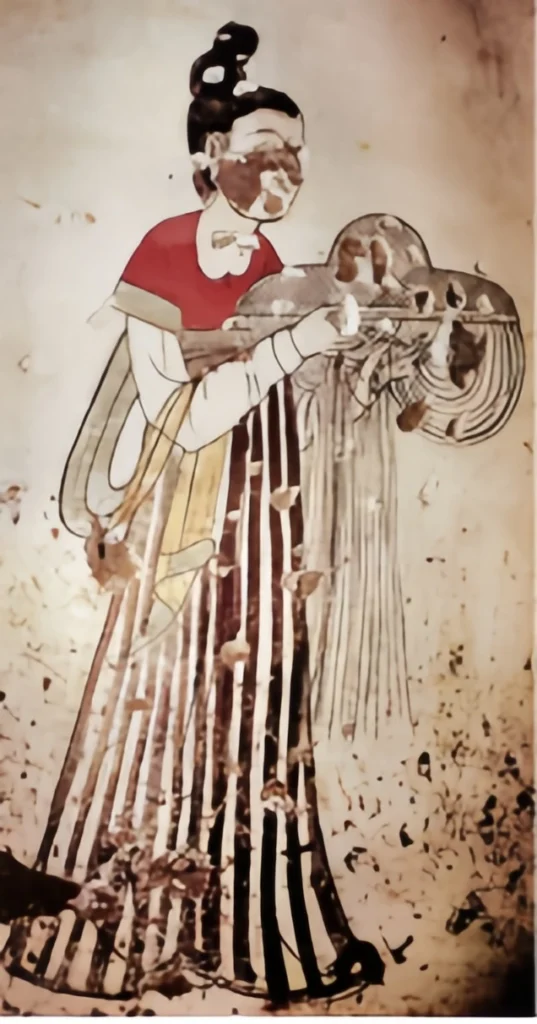
These accessories reflected the social context and cultural exchanges of the time, balancing women’s modesty with evolving ethnic influences in clothing.
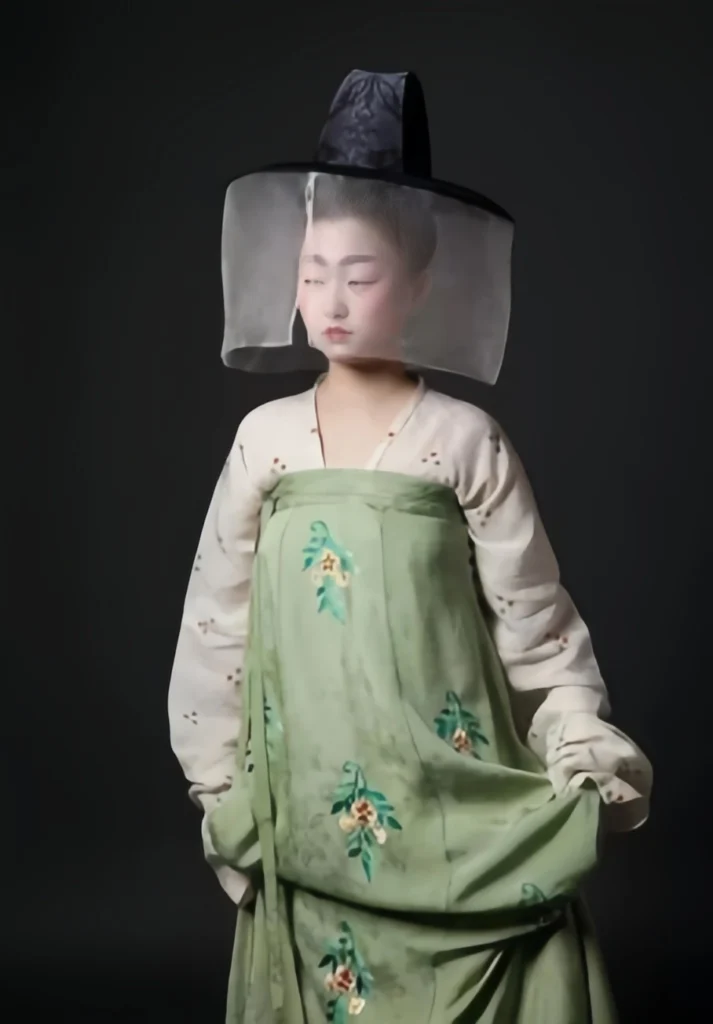

Accessories and Makeup
Accessories
People in this period paid great attention to coordinated outfits, with a wide variety of accessories.
Men: Wore jade pendants, scented pouches, and belts. Jade pendants, symbolizing virtue, featured dragon, phoenix, or cloud motifs. Scented pouches, made of brocade and filled with fragrances, added an air of elegance. Belts, crafted from leather or silk and adorned with gold, silver, or jade, signified status.
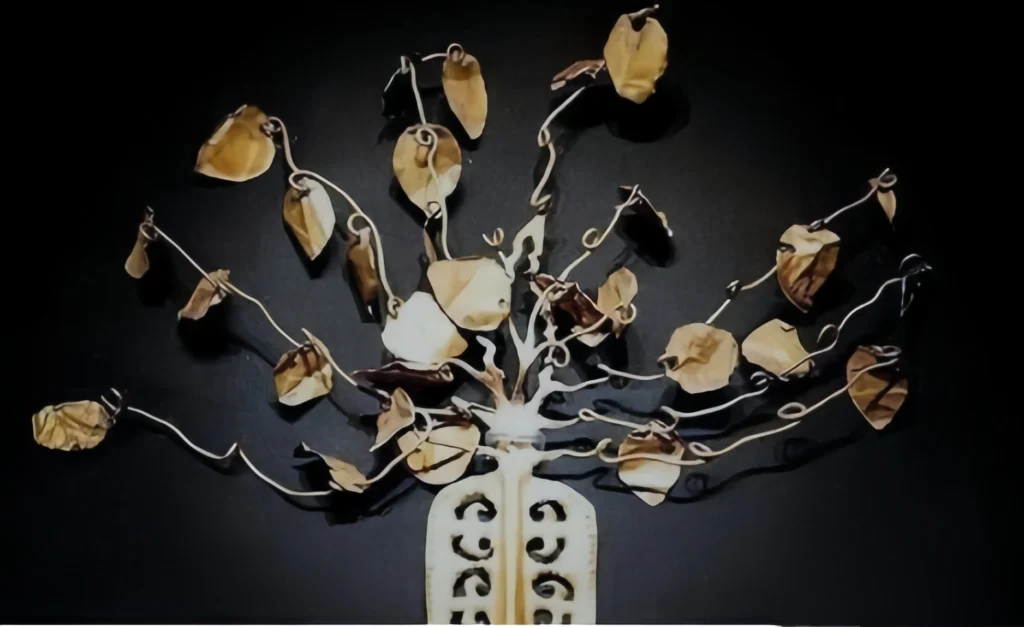
Women: Used jade pendants, pouches, hairpins, buyao (swaying hairpins), earrings, and bracelets. Hairpins, made of gold, silver, jade, or wood, were intricately designed. Buyao, adorned with pearls or jewels, swayed gracefully with movement. Earrings and bracelets, often embedded with gems, were dazzlingly ornate.
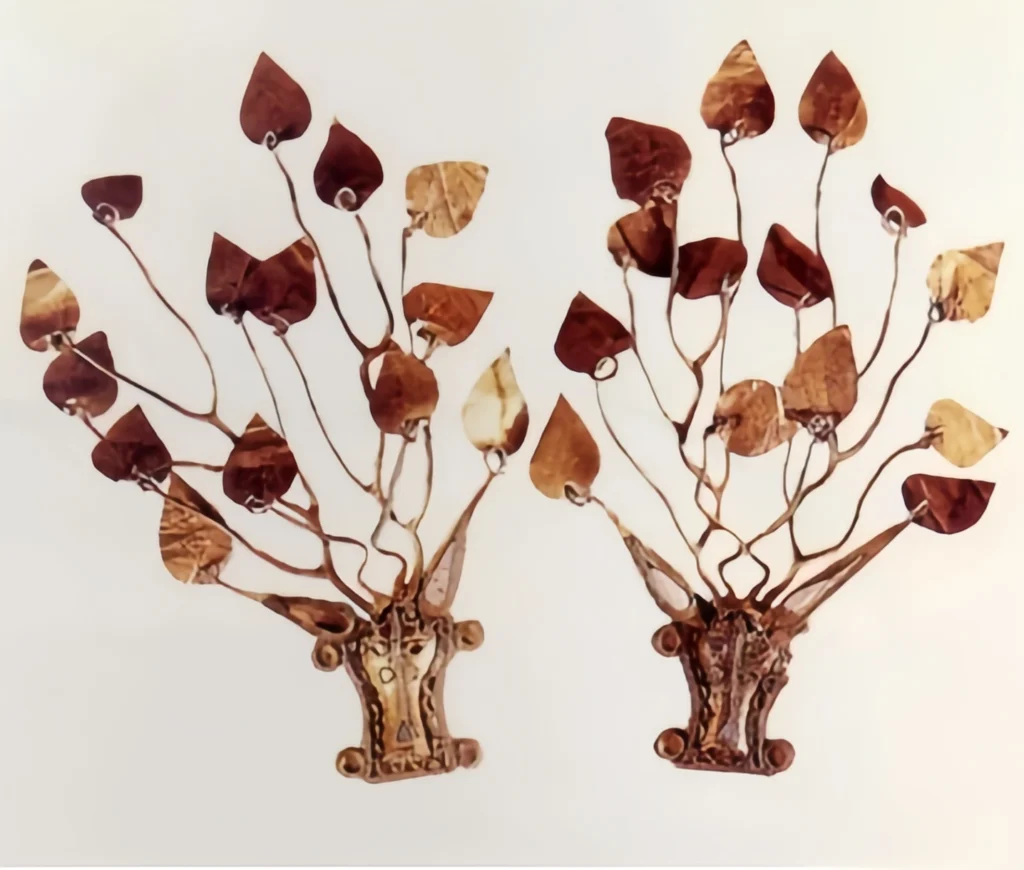
Makeup
Women’s makeup was distinctive.

Forehead Yellow (Ehuang): Yellow pigment or paper cutouts in various shapes were applied to the forehead, enhancing facial depth and beauty.
Flower Ornaments (Huadian): Gold foil, colored paper, or mother-of-pearl shaped into circles, diamonds, or petals were placed between the brows, adding charm.
Eyebrow Styles: Thin, elongated brows, like “moth brows” (emei), created a delicate, refined look, reflecting the era’s unique aesthetic.

Cultural Significance and Legacy
Hanfu of the Wei, Jin, and Southern and Northern Dynasties encapsulated the era’s cultural spirit. It bore witness to ethnic integration, showcasing the mutual acceptance and influence of diverse cultures and reflecting the inclusive nature of Chinese heritage.
The clothing styles revealed a pursuit of freedom, individuality, and a break from traditional Confucian constraints, as well as a love for nature and art. This cultural richness not only enhanced the treasury of ancient Chinese fashion but also inspired later clothing designs and cultural studies. Click here to study more the history and revival of ancient Chinese Hanfu
Today, the hanfu revival movement thrives, with elements from this period widely adopted, breathing new life into this timeless elegance. It bridges history and modernity, allowing us to feel the profound cultural heritage of the Chinese nation through its preservation.
For a deeper dive into The Most Classic Hanfu Styles in History, explore this hanfu styles.



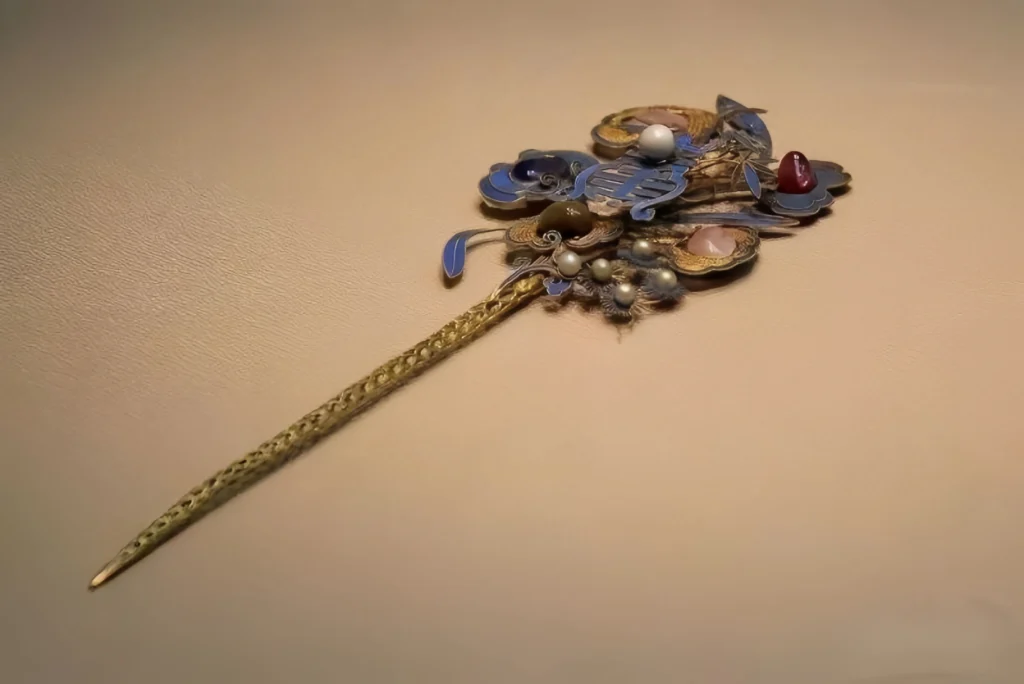

Responses